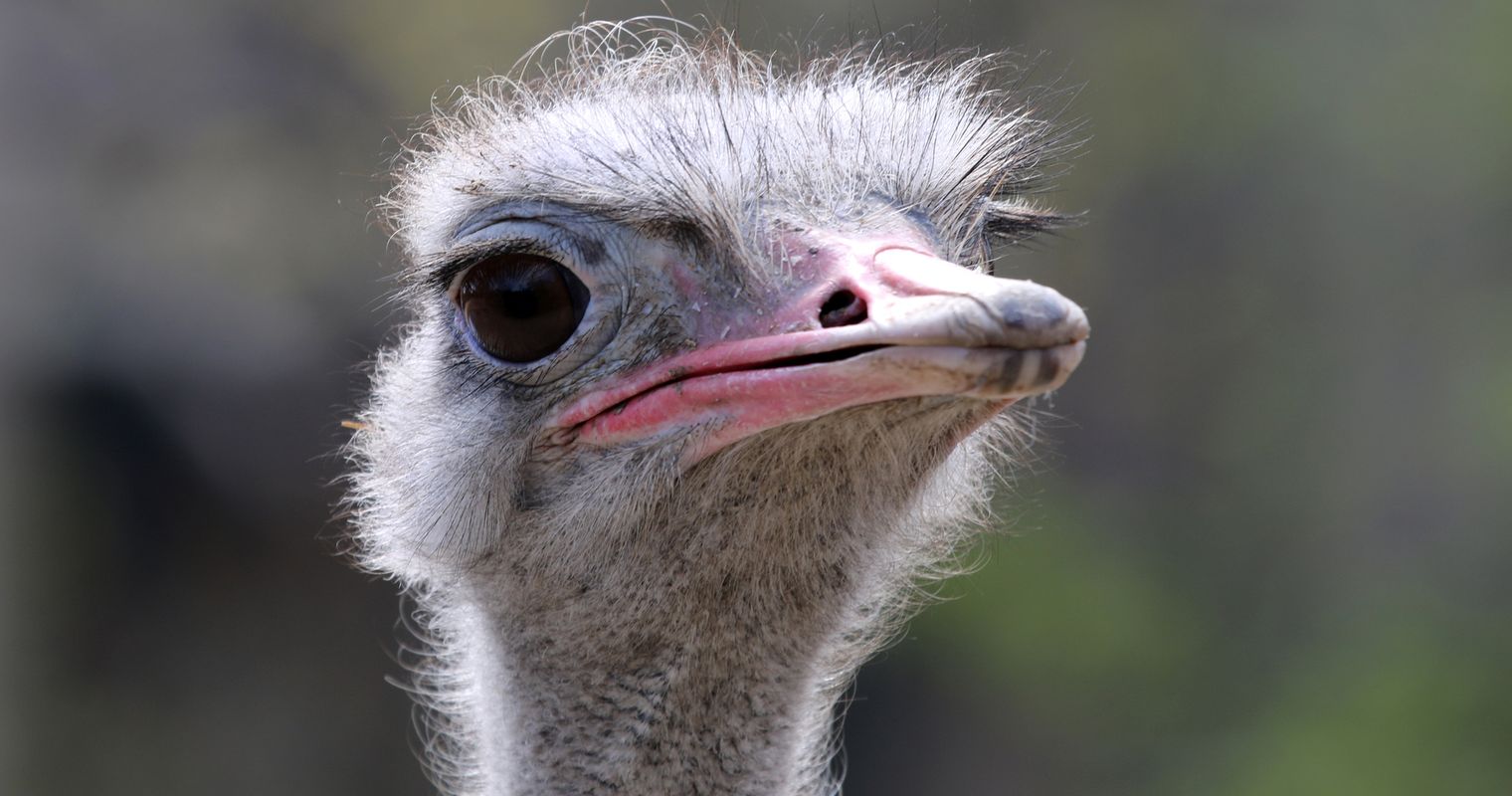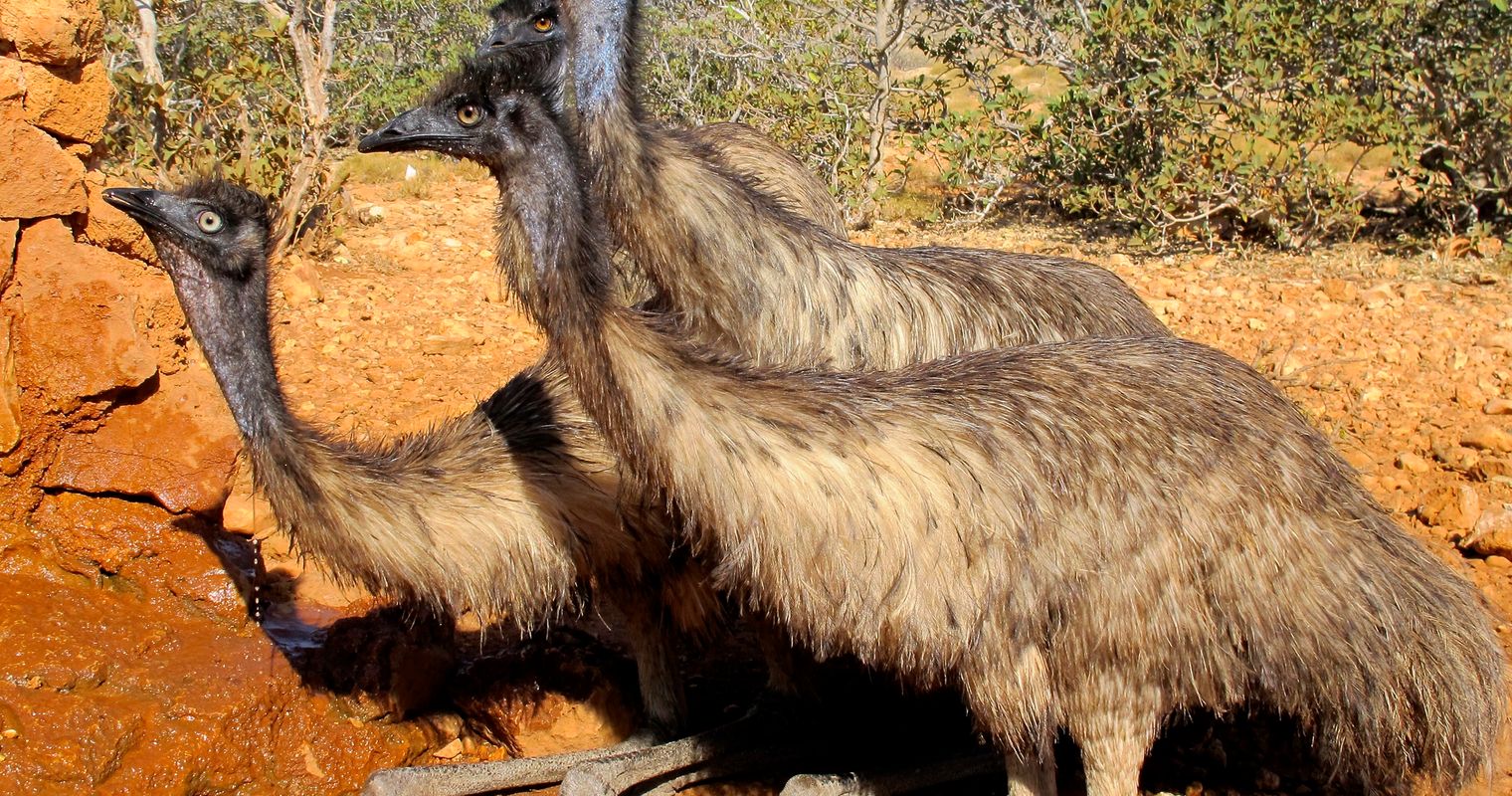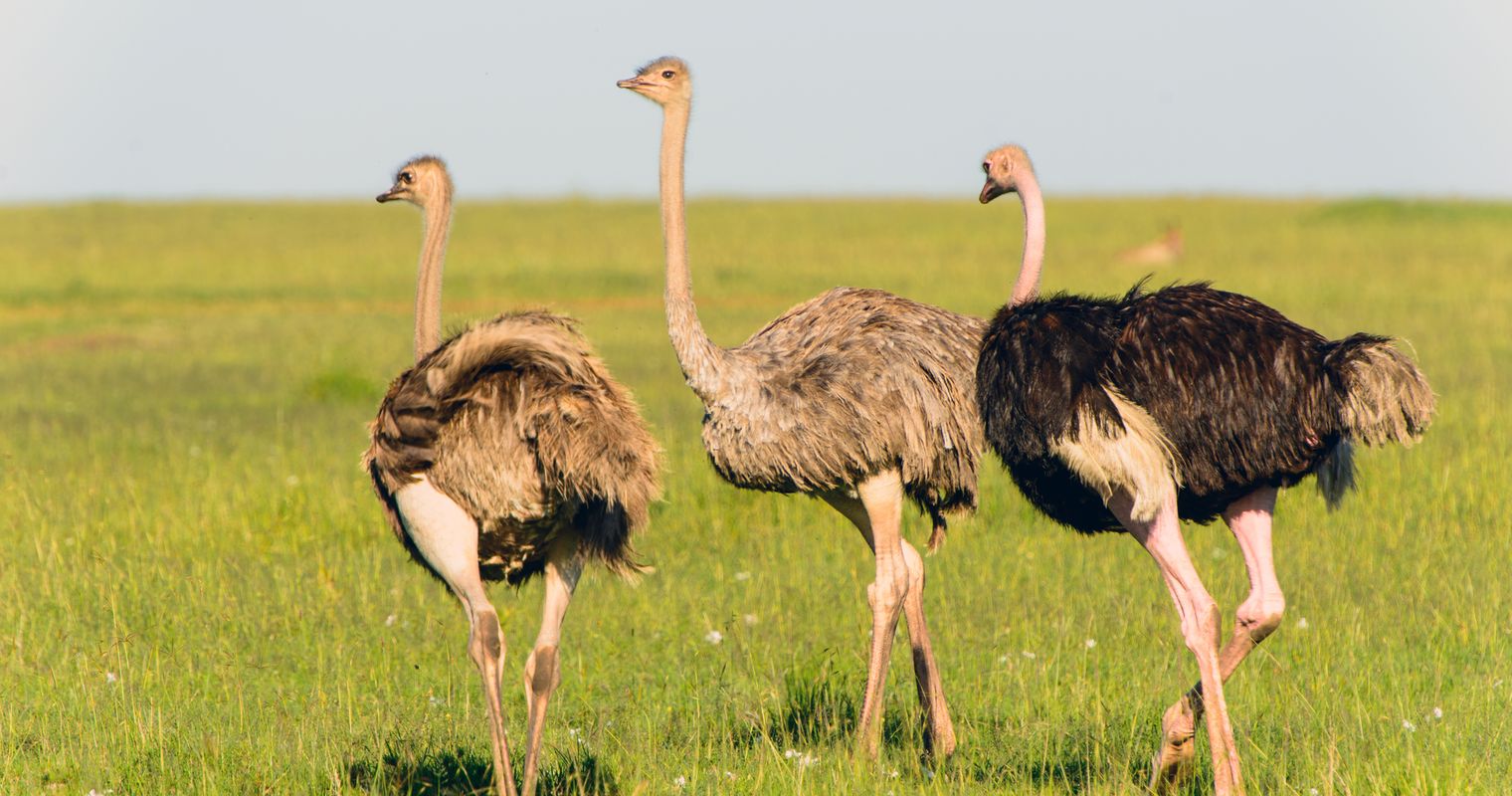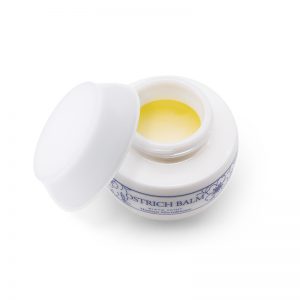Why do many people get confused between the ostrich oil and emu oil?
Many people get confused between the ostrich oil and emu oil because it’s easy to confuse an ostrich with an emu. They are both very fast running birds that cannot fly, and also, they are big, very big.
In fact, the ostrich is the biggest bird in the world. Males can reach up to up to 2.8 meters tall. The emu is the second biggest, with the males attaining two meters in height. Apart from that, they are quite different from each other.
Female and male emus both have deep brown feathers. But during the mating season, an emu hen’s feathers turn black and the bare skin on the head turns blue.
Ostrich males, on the other hand, are very distinct from their female counterparts. They bear deep black feathers and white-tipped wings and tails, while the ostrich hen has grey / brown feathers.

Another difference is where they are found. Ostriches are native to Africa while emus wander the outback of Australia. (Although they do sometimes go into towns and city suburbs in times of severe drought.)
So, if you want to know which is which, look at the bird’s colour and height. You’ll be sure to spot an ostrich from an emu now.
What are emus reared for?
In the past, Aboriginal Australians rear emus for their meat, leather and oil. They use the fat as brush medicine, and they rub this into their skin. Other than that, they also use the fact to oil wooden tools and utensils, such as the coolamon.
Around 1970, this practice began to involve commercially farming emus in Australia. This is now a practice that has spread to the US, China and Peru. This also includes, to a lesser extent, some other countries such as Canada.
Emu oil in skincare and its benefits
Incorporating emu oil into skincare provides many benefits. Established as a proven emollient, emu oil can both penetrate the skin and provide essential moisture that helps repair and hydrate. Additionally, for sore and itchy skin, the emu oil’s anti-inflammatory properties help to reduce the redness.
Emu oil won’t clog your pores either, making it a very effective moisturiser for those people who suffer from skin problems such as acne or rosacea.
Containing 47% oleic acid, a fatty acid that increases skin penetration, emu oil enables the delivery of nutrients deep into the skin. This is an essential property for any skincare product. There is not much point in having expensive nutrimental additives sitting on top of your skin when they need to get into the deeper skin layers.
Emu oil is essentially non-irritating. It can help wounds heal faster and it lessens the appearance of both scars and stretch marks. Emu oil also acts as an anti-aging agent. It replenishes those fats stored in the skin that keep its appearance young and soft.

Are there any downsides to using emu oil in skincare?
Being a wholly natural product, there isn’t a reason to avoid using emu oil. However, there is always a possibility that some people may have an allergic reaction to emu oil when using it as a topical medication.
To avoid a large outbreak of soreness or redness, first, apply a small amount of emu oil to a fingertip-sized patch of skin. Use the back of your hand as a testing site, or behind the knee, where any reaction will be less noticeable. If there are any signs of an allergic reaction, stop using it at once.
As with all products that you buy, please be sure to purchase your oil from reputable sources only. Then you can be sure of its quality and safety. You will be using it on your skin after all.
If you are pregnant or breastfeeding, please consult your doctor about the possible effects it could have on pregnancy or your child.
Why have Japanese skincare companies recently started switching to ostrich oil in their products?
Ostrich oil – consisting of over 70% oleic acid and palmitic acid – has an even higher skin-permeability than emu oil.

The Japanese cosmetic industry quickly saw the benefits of ostrich oil on the skin. Ostrich oil quickly become an ingredient in most cold creams, face creams, and other Japanese skincare products.
Ostrich oil has a melting point of 26.5°C. When put on human skin it turns into liquid texture because it melts at body temperature, making it quickly and easily absorbed. Furthermore, as characteristics such as safety, non-irritancy and non-toxicity are massive concerns of any consumer.

Moreover, for any consumer with concerns about certain characteristics such as safety, non-irritancy and non-toxicity, here is some good news. Ostrich oil can be used in many pharmaceutical formulations as a moderately efficient, facile penetration vehicle, or even used as a cosmetic enhancer.

So, it should come as no surprise to those that follow beauty news that the Japanese cosmetic industry has taken such a keen interest in it.

Ostrich rearing in Japan
According to the Tokyo-based Japan Ostrich Council established in May 22, 1997, there are no fewer than five hundred locations across the country that rears the world’s largest bird. These range from Okinawa (Japan’s southernmost prefecture) to Hokkaido (Japan’s northernmost prefecture).
Nearly seventy per cent of ostrich farmers are connected to the construction industry, where business has slowed from the boom years of the 1980s and 90s. They also rear the earthbound birds as a side business.
How do Japanese ostrich farmers ensure the quality of their product? What do they do differently from ostrich farmers from other parts of the world?
As with most things Japanese, there is a high level of organisation and a strict implementation of rules and regulations. Certainly, one main difference is that the Japan Ostrich Cooperative Association has designated two slaughterhouses nationwide for processing the birds. They tag the ranch’s name, the bird’s age, its price and even contents of its feed on the ostriches brought in for slaughter. They then saved and recorded this data. Each individual producer’s name and the date of slaughter are also written on the packaging of all processed products. There is also a mechanism in place to trace each individual product’s origins.
The benefits of using ostrich oil in skincare
As well as being a remedy for cuts and burns in ancient times, ostrich oil was useful for skin protection. Even Cleopatra was said to have used it, and who doesn’t know of her famed beauty? So, why exactly was it good enough for a queen?
Most of the benefits gained from ostrich oil are due to it being high in Omega 3, 6, and 9. These are essential fatty acids (EFAs) that the skin loves – a property that allows for its deep absorption.
Other benefits include:
Moisturizing
Ostrich oil is mostly used as an excellent moisturizer and can be easily applied before you put on your daytime makeup. Because the skin is able to absorb it so quickly, ostrich oil works great as an overnight product, too.

You can wake up in the morning safe in the knowledge that there aren’t any sticky residue on the bedding. It is also hypoallergenic, non-comedogenic and it is kind to all skin types.
Anti-aging
Containing potent anti-aging properties, ostrich oil is useful for those who wish to maintain a youthful look. It reduces the onset of several symptoms of ageing, including bags under the eyes and wrinkles. The fatty acids found in ostrich oil are important for promoting cell division, recovery and growth.

Skin disorders
There is an increasing amount of evidence that suggests ostrich oil offers relief from cuts, sunburn, burns, and even blisters. Those suffering from eczema and rosacea can use ostrich oil to improve their skin condition. This includes reducing skin redness and eventually perhaps even completely remedy the problem.
What are the pros and cons of BLACK PAINT Microbiome Skincare sourcing Ostrich Oil only from Japan?

As mentioned earlier, Japan Ostrich Cooperative Association enforces straight standards on quality. Limiting to only 2 slaughterhouses (1 in Okayama and 1 in Hokkaido) for the entire country, each Ostrich can be tightly tracked. This, together with Japanese shoukunin spirit of dedication among farmers, ensure all Ostrich produce are of the highest achievable quality. Japan-sourced oil is higher in cost, but it is overshadowed by the effectiveness. Not surprisingly, our customers vote for Ostrich Balm with their wallet. It had been the best seller for dry skin and skin repair for many years straight. Tourists who had tried our Ostrich Balm go through all channels to purchase them again after they went back to their country.
The trade-off that comes long when BLACK PAINT only uses Japan sourced Ostrich oil is that it is not Halal.
Reference
http://japan-ostrich.org/







